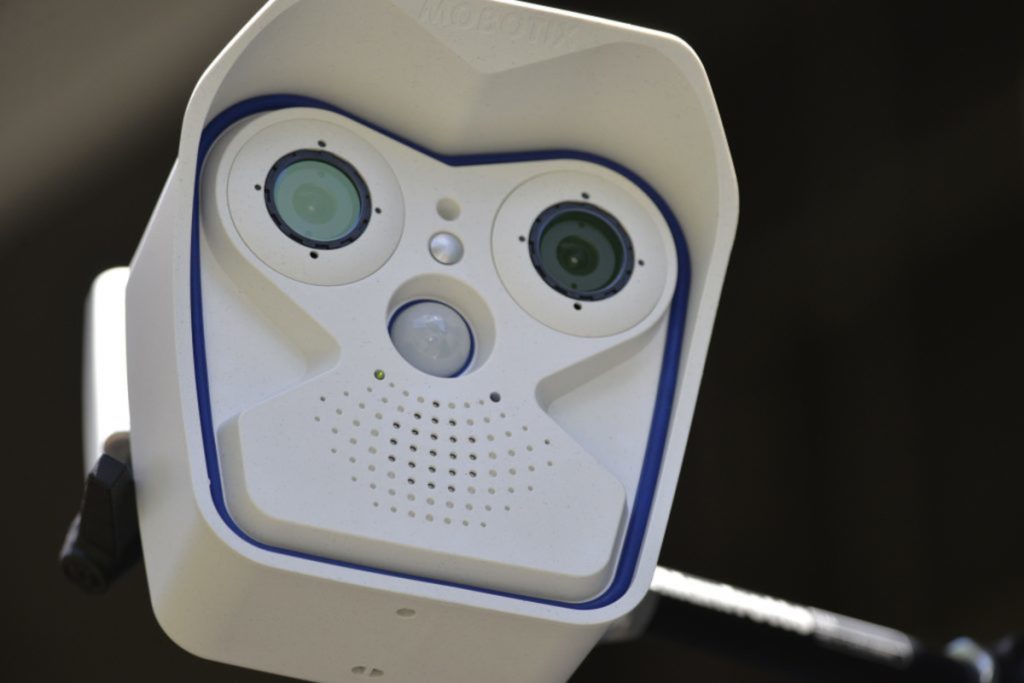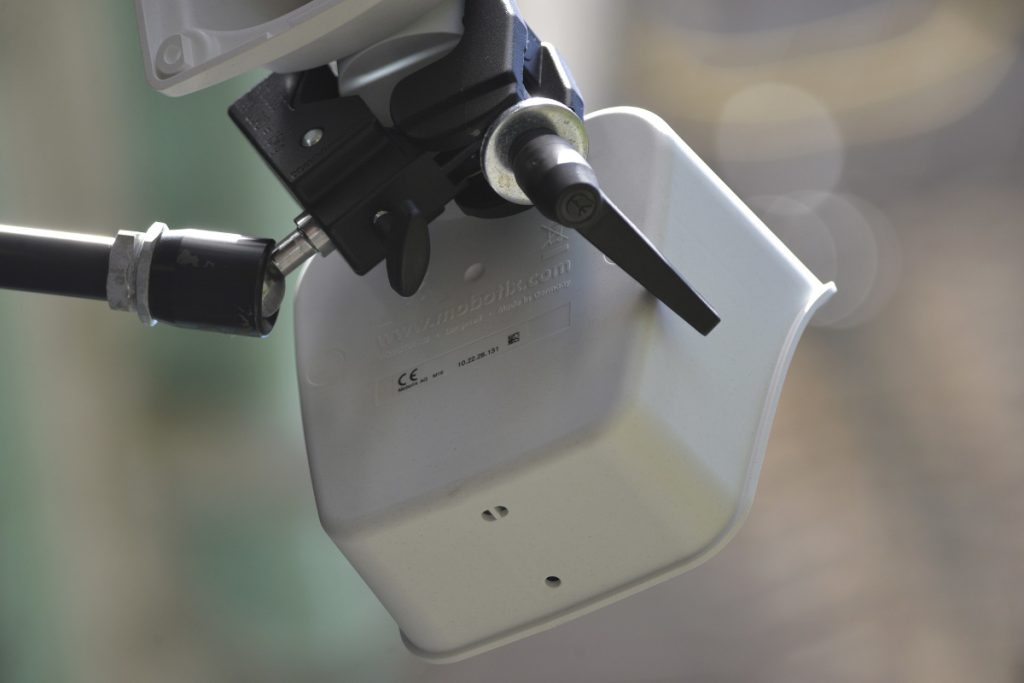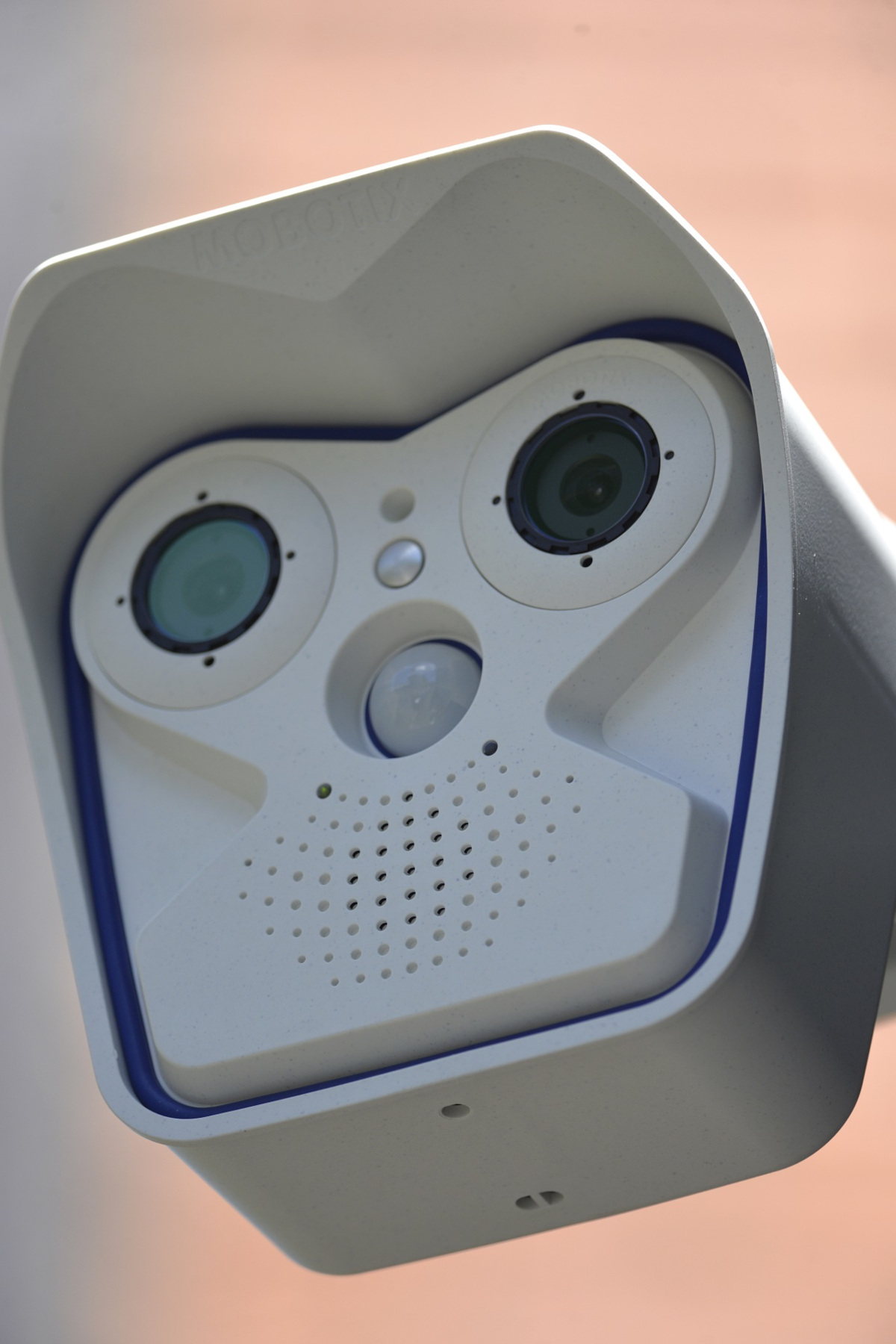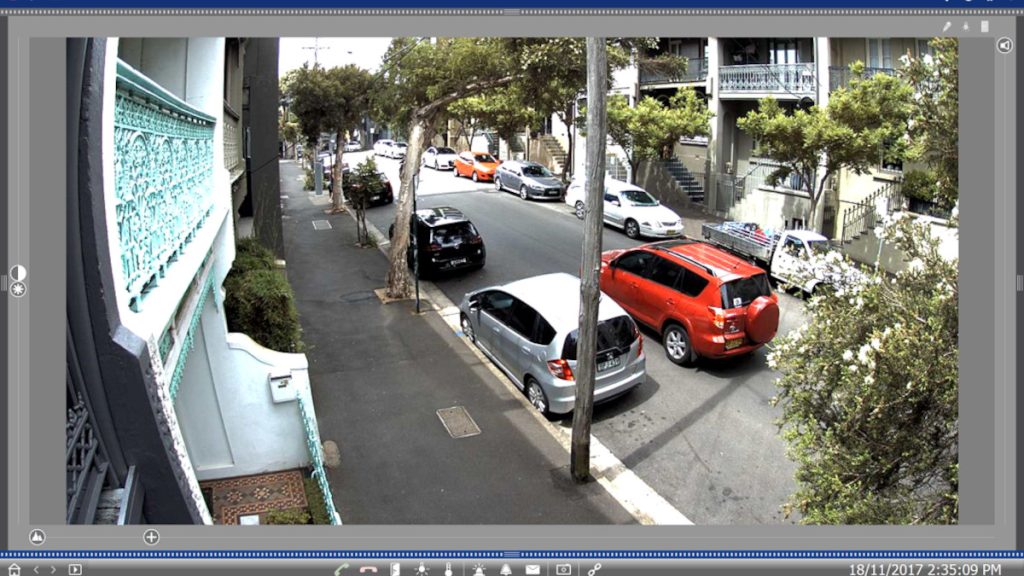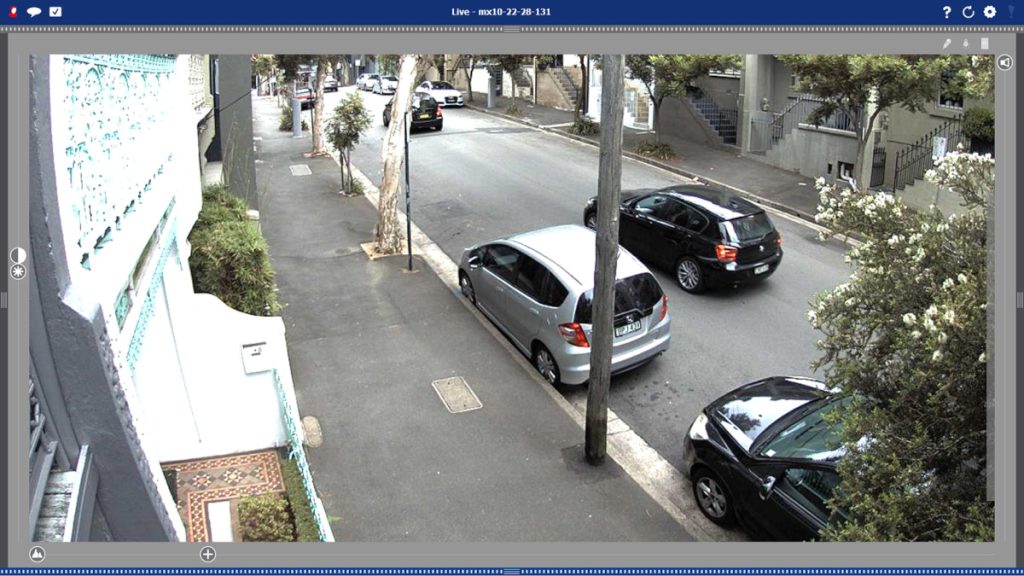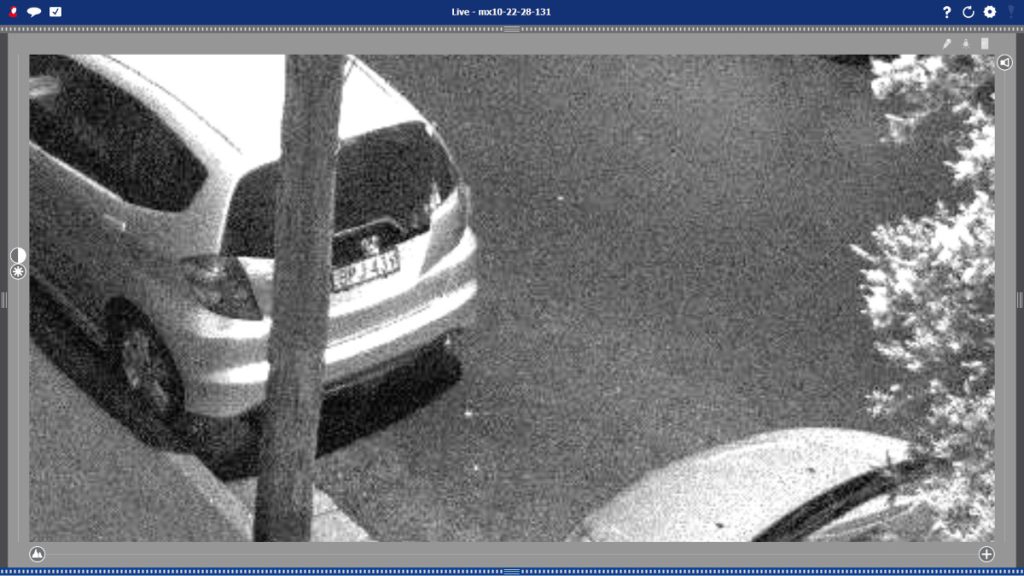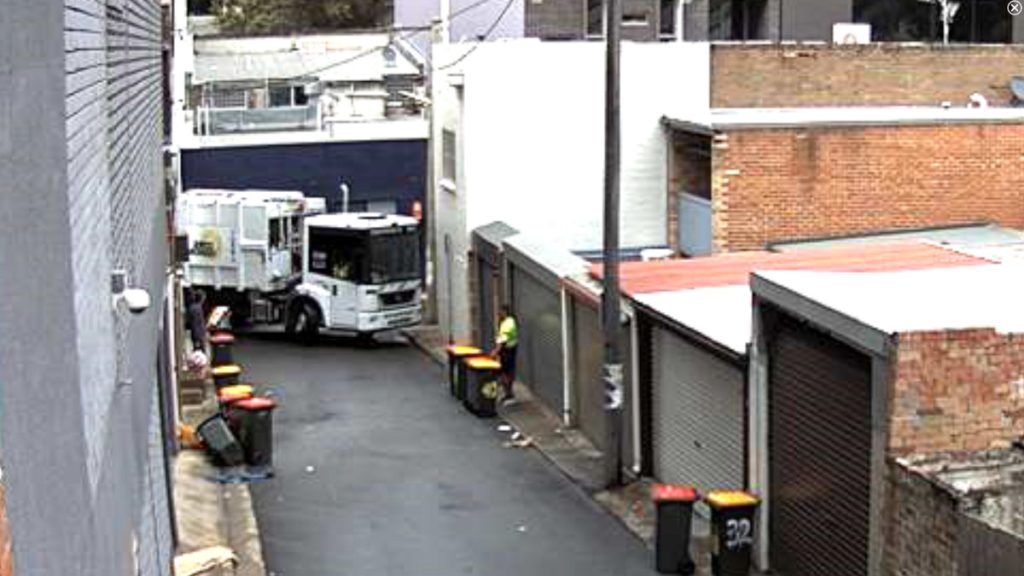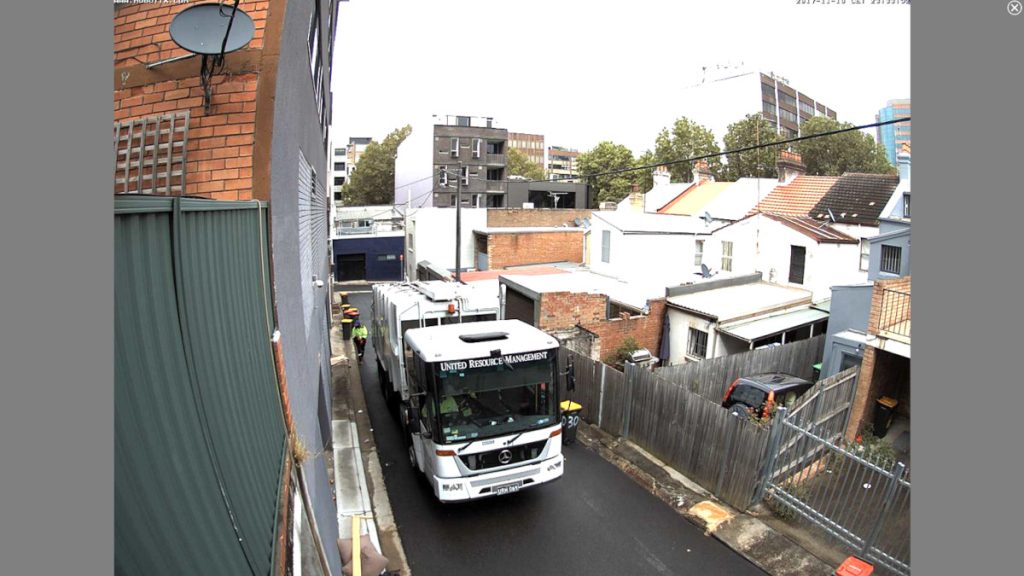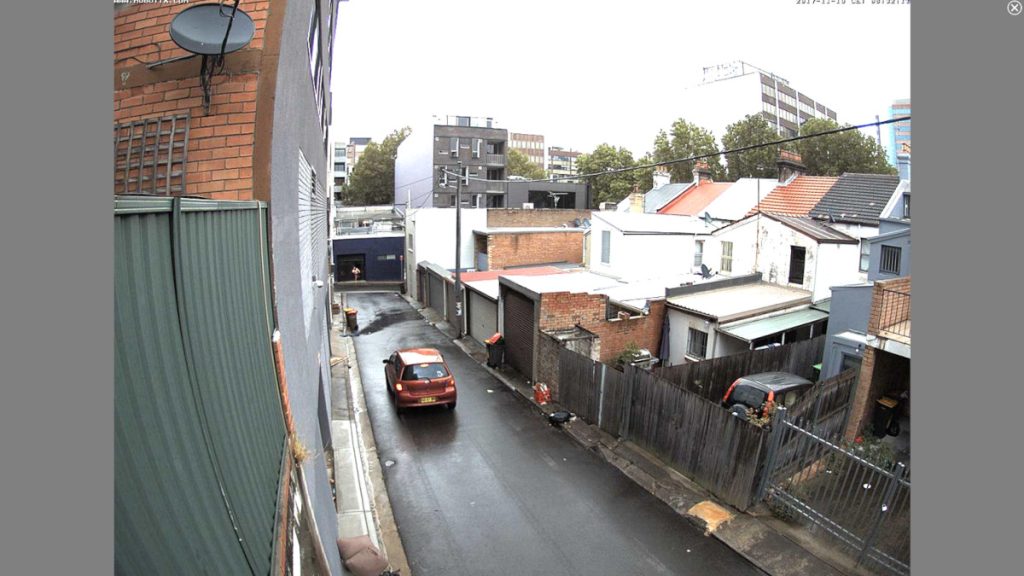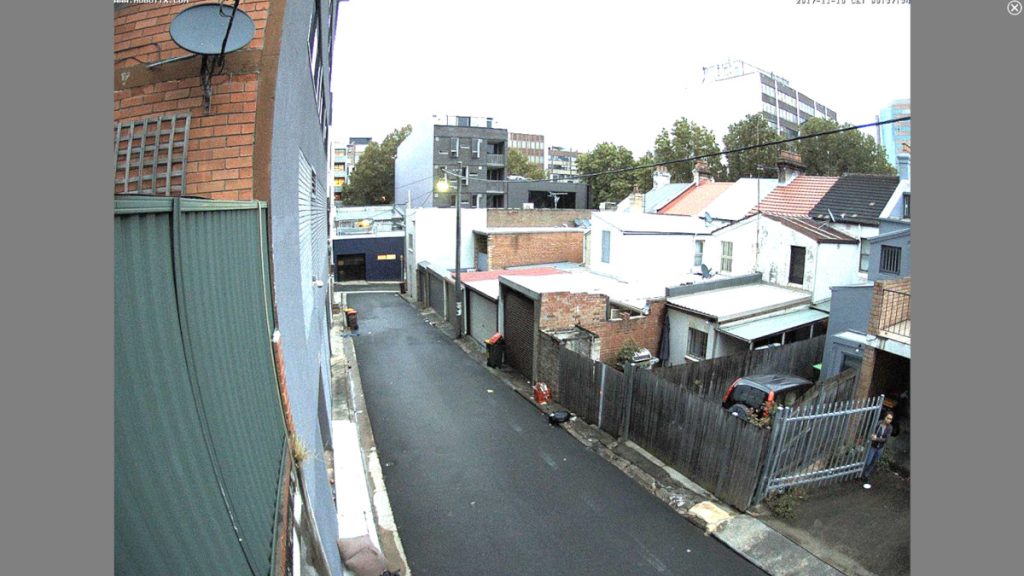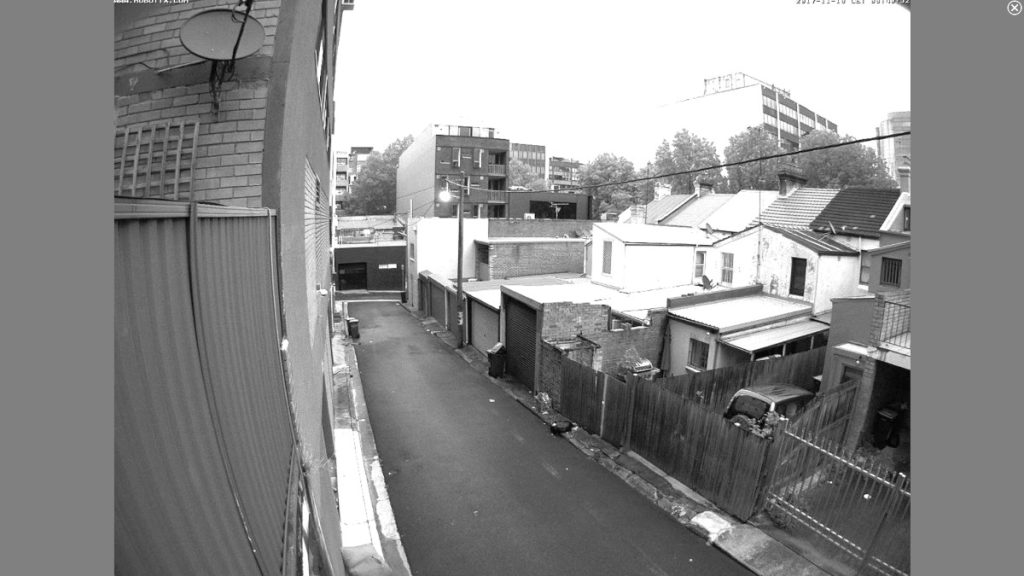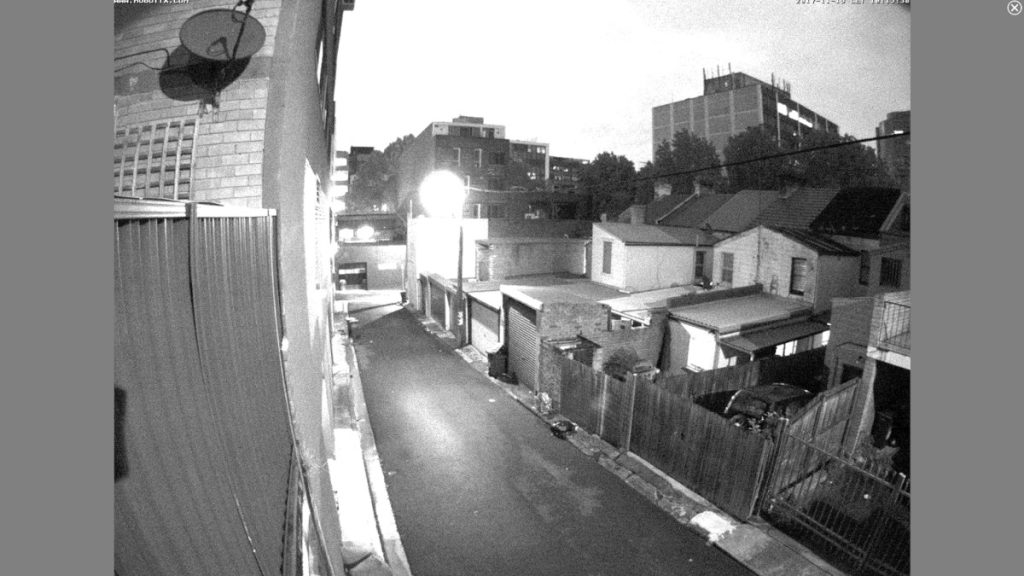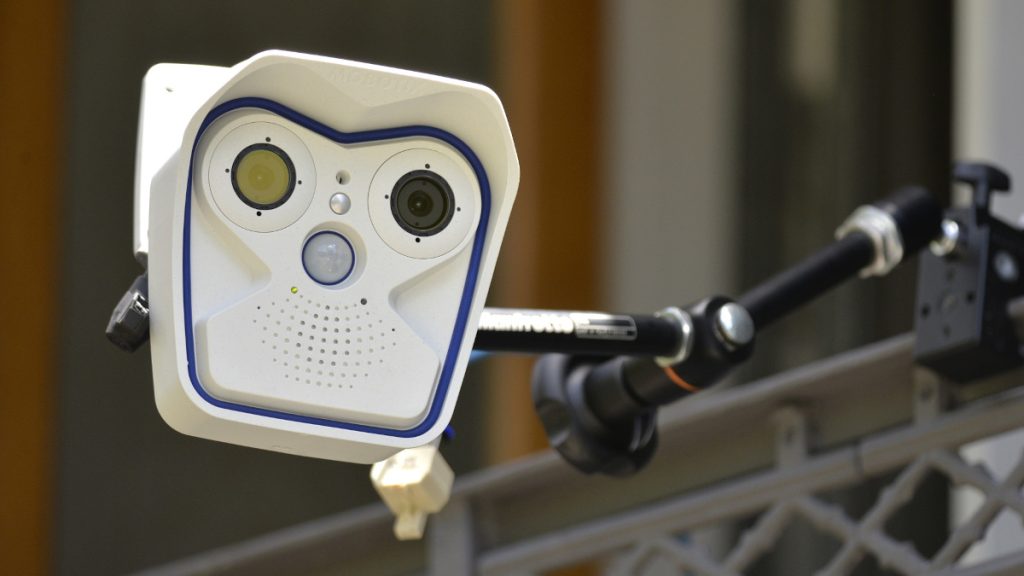Contents
The Review Of a Modular Daul Sensor Surveillance System-MOBOTIX M16 Camera.
MOBOTIX M16 camera is a modular dual sensor surveillance system that offers installers and end users much more than meets the eye. It’s a PoE, 6MP day/night camera with an integrated housing, rated IP66 and IK10, supported by MxManagementCenter and MxAnalytics software and for the first time offering H.264 compression.
HOLDING the Mobotix M16 in the hand is instructive – it doesn’t feel like a modern surveillance camera. The M16 is compact but at just under 1.2kg it’s a hunk, with the camera system buttoned up inside a Polybutylene Terephthalate (PBT) housing reinforced with glass fibre to increase strength, stiffness, impact resistance and the ability to withstand heat, acids, oils and sunlight. Strength is a design characteristic – this camera has an MTBF of 80,000 hours – that’s around 9 years of constant operation.
As I work to crack open the M16’s shell to fit a longer network cable it’s clear this is a quality manufacture from front to back – everything is well made and fits together neatly, with no short cuts behind the fascia. Build quality is a testament to Mobotix’ long history of survival in tough climes. We’ve seen Julien Lenser-Hobbs punting M series cameras around at Mobotix conferences and the reason he can do that is apparent as soon as you get the M16 in your hands – this is a rugged little beast.
Before we get into camera performance – let’s run through overall specifications. They are comprehensive and come at you in layers and that’s because Mobotix was never a box mover but always sold a complete solution – camera, software and hardware add-ons. The Mobotix back-end has been polished by the lapidary of operational demands over 17 years so that, taken as a whole, the M16 feels smooth as a gem stone.
The MOBOTIX M16 camera we are looking at has a pair of optical image sensors (they are interchangeable) one being colour for day work, the other monochrome for night. Each of the sensors is a 1/1.8-inch progressive scan 1/1.8-inch CMOS with a total pixel count of 3072 x 2048 at up to 42ips, and this new M16 camera engine has a dual core microprocessor. Mobotix offers a range of image sensor lens options which you select before ordering – distant tele, super tele, standard, wide lens, super wide, ultra wide and hemispheric.
In this case, both day and night sensors are fitted with F1.8 Ultrawide L20 lenses with a focal length of 3.6mm and an angle of view of 103 degrees x 77 degrees high.
Light sensitivity numbers are interesting because Mobotix quotes them at the realistic shutter speed of 1/60th of a second, as well as the less likely shutter speed of 1/1 second. At 1/60th low light performance in colour is 0.1 lux and .005 lux at one second. In monochrome, the numbers are .02 at 1/60th of a second and .001 at 1 second. Frankly, anything shot at 1 second that’s not a static object is going to be rendered artistically to say the least. But as an operator, it’s nice to have the ability to snare a static scene at slow shutter speed in order to get the plate of a parked car before hopping back to 1/60th to minimise motion blur.
The M16 has a strong operating temperature range from -30 to 60 degrees C, features an internal microSD DVR, a microphone and speaker (16bit/16kHz HD wideband audio giving live and audio messages), a PIR sensor, a temperature sensor and a shock detector. Power consumption is modest at 7W, dimensions are compact at 210 x 158 x 207mm and weight modest at 1.160kg. The camera ships with screws, dowels, screw caps, a pair of Allen keys, a module key, a VarioFlex wall and ceiling mount with rubber sealing, a 0.5m ethernet patch cable and a blind module.
MOBOTIX M16 Camera’s Specifications
- Mx6 system platform with H.264 and ONVIF compatibility
- Recording on an internal MicroSD card (4 GB as standard)
- Integrated microphone and speaker
- Integrated shock detector und PIR sensor
- Wall or ceiling mounting (mount included with purchase)
- Can be easily installed on a pole with pole mount (accessory)
- Suitable IR illuminator (PoE+) available as an option
MOBOTIX M16 Camera’s Functions
On the networking side, Mobotix has all the bells and whistles including protocols IPv4, IPv6, HTTP, HTTPS, FTP, RTP, UDP, SNMP, SMTP, DHCP (client and server), NTP (client and server), SIP (client and server). Cyber security capabilities are comprehensive; including camera and data security, user and group management, SSL connections, IP-based access control, IEEE802.1x, intrusion detection and digital image signature. Mobotix used to be a completely closed shop when it came to third party integration but there’s now H.264, Genetec Protocol integration, and ONVIF compatibility is coming.
Video codecs are MxPEG, MJPEG and H.264, and there’s G.711 (PCMA and PCMU) and G.722 audio compression.
When it comes to display and streaming there are multiple image options. You can configure image format, select image crops based on frame rate and resolution and select from multiple bitrate options. The DVR/storage management solution is at the edge via microSD card and externally via USB device and NAS, with different streams for live image and recording, MxFFS with archive function, pre-alarm an post-alarm images, monitoring recording with failure reporting.
You can send and receive MxMessages, undertake video analysis, programme and activate the video motion detector, there’s onboard MxActivitySensor, integrated MxManagementCenter and there’s a Mobile Mobotix App for live viewing or actioning of events remotely. This test is undertaken on MxManagementCenter I’ve downloaded to my workstation.
We’ve already mentioned some of the M16’s large suite of general functions but there are a few more it’s worth touching on – continuous or event recording with audio, time-controlled flexible event logic, weekly schedules for recordings and events, event video and image via FTP or email, playback and quad view via web browser, animated logos on the image, bi-directional audio in the browser, customised voice messages and plenty more.
Test Driving The MOBOTIX M16
We’re testing the M16 through a Netgear 1080S PoE switch but instead of using the usual Dell Optiplex server, I’m viewing the camera on my workstation, an HP EliteDesk 800 G1 with an i7 4785T processor with integrated video processing, 2.2GHz processing speed and 8GB of RAM.
In terms of camera settings, I’m using MxPEG as codec and viewing the camera in MxManagementCenter with image quality set to high (1280 x 960), sharpness at 4, noise filtering set to low, colour saturation at 0, brightness at 0, average brightness at 40 per cent, BLC at 4 and a 100 per cent exposure rating. I’ve got AWB at auto, set night mode for 10 lux and my frame rate is 15 ips.
Colour Rendition
I start my test out the front in good light – conditions are variable – strong light and deep shade from surrounding towers – a typical city street scene. Optically the M16 is always solid and at times – particularly in very low light – it’s surprising. The sensor and processor are highly responsive to changing light, there’s almost no noise or processing pulse in the image stream. Contrast is good, sharpness is strong, too. With a 3.6mm lens you move into softness in the first half of digital zoom but that’s expected with a 107-degree angle of view, even at 6MP resolution. This is a big all-round view. Exposure is generally consistent across the frame with a tendency to overexpose.
Colour rendition is good with strong reds and blues. Something MxMC allows is the ability to create zones of exposure – that’s a nice feature for scenes like this one.
The 3.6mm ultra-wide lens with it’s angle of view of 107 degrees has a hyperfocal distance of less than half a metre, so within half that distance and all the way out to infinity, the scene is more or less in focus. In practice, I’m getting plates to about 12m – past this point things get softer as pixel spread comes into play – you need to select your fixed focal length camera sensors thoughtfully – in this application the standard focal length would have been my best option, giving me enhanced depths of field.
Longitudinal chromatic aberration is restricted to the outlines of white cars. Barrel distortion is quite mild for a lens of this focal length. I try to get the plate of a fast-moving cab at about 15m and can’t, but it seems to be softness thanks to pixel spread, not blur. I try again with a yellow and black plate slightly closer (the first plate was blue and white) and snare it but there’s a cut-off point for plates and this applies to faces, too – around 12m.
Past this point situational awareness remains strong, with excellent image balance and vibrant colour but digital zoom at a 103-degree angle of view comes at a price. It has an advantage in that it allows you to capture much more of a scene than you might with a lens sitting at a focal length of 5-6mm but you will mouse wheel into softness. After the first afternoon of testing I head back to the office at about 9pm to see how things are looking in full dark. The camera has gone into night mode – not with a cut filter, but by switching over to the monochrome camera sensor.
In around 4 lux, the image is noisy, but it retains plenty of detail and is also light on blur.
This confirms something we saw at SecTech Camera Shootout. In real world applications the M16 can give you moving details many other cameras cannot, and it does this with lots of controlled amplification and not very much digital rebuilding of the image stream. The image exhibits some blooming and flare, with over exposure at the bright end of the street, but that’s past the camera’s useful depth of field at this ultrawide focal length anyway. I am still getting the plate of neighbour Fred’s car about 6m from the lens and it’s easy enough to see the make of cars driving up the street.
Next day I can see straight away the camera manages street backlight very well. When exposing for shaded scenes there’s some typical overexposure in bright patches but it’s well balanced and I have recourse to the brightness and contrast slider on the left of the viewer. Most the time I find that keeping the contrast button just above the brightness button works best no matter which levels I choose.
Motion & Recognition Sensing
Motion blur is low. I don’t see tone mapping around fast-moving objects. I don’t quite manage the plate of a motor scooter at 15m and 35kmph but there are no worries with a group of people at around 10m and the faces of pedestrians and joggers are easily discernible, too. Court admissible faces in good light are pushed back to 16m at this focal length. There are not sharp at that distance but I’m getting high levels of detail across the wide scene. I try for a plate on digital zoom at about 20m but can’t get it.
Next, I move the camera out back and position it looking down Bellevue Lane – that’s the darkest view I have in this application in low light and I’m going to leave the camera here throughout the afternoon and into the evening. Foveaux Lane forms a T-junction at about 70m and this angle of view is giving me situational awareness – including clothing and hair colour at the junction – but not court admissible faces. It’s bright out back initially but shadows lengthen and late in the afternoon it starts to rain. Throughout all this, the M16 returns a consistent image stream with good colour and contrast.
I get a number of chances to confirm that the camera is sharpest within 12m before pixel spread has an impact.
Low Light Performance
As evening wears on, noise starts creeping into the colour image. The noise is very consistent across the frame and colour rendition and detail levels remain high. The camera is set to switch to night mode at 10 lux but according to my Sekonic, it goes over into mono early at around 55 lux (4.6 EV), but does so with none of the usual fuss. In black and white, noise reduces, and sharpness and contrast remain high. As light levels slide, noise increases – it’s much more apparent upon digital zoom – when it comes to noise, the deeper you go, the deeper you go, so to speak. At full screen, however, the night scene in the lane is good.
The passage of a car up the lane suggests the Mobotix M16 is particularly good against motion blur. The noise levels remain very consistent across the frame. There’s still considerable detail in this scene as light slips to 28 lux (3.4 EV), 15 lux (2.7EV), 7 lux (1.6EV) – same as most cameras, that last EV or so is the point at which the image becomes most stressed. At a little after 8 on a rainy night, I measure 0 EV at the lens, that’s sub 2 lux. The image remains useful – more than sharp enough to see rats running about in the lane at 8m.
Conclusion
SEN is occasionally accused of targeted enthusiasm in its camera tests but this assertion is off the mark. We
see many cameras and sometimes we see something that really knocks our socks off optically – typically that something is high resolution, has a motorised zoom and a remote focus, and does very well in low light. Comparatively, the M16 in this configuration has high resolution and a fixed 3.6mm lens, making it an all-rounder the reviewer comes to respect more and more after living with it.
All top-flight cameras, including the M16, have areas of optical performance and operational function that are praiseworthy. It took only about 5 minutes for me to come to appreciate the core strengths of the M16 – its build quality and potential for longevity, the instant appearance on my workstation with zero hassle, the intuitive interface.
In terms of camera performance, there’s a lot to like about the Mobotix M16 in this ultra-wide angle configuration. There’s barrel distortion but it’s mild – about 8-9 per cent. Chromatic aberration is there if you look for it in areas of high contrast but it’s mild, too, suggesting a quality lens design. Overall, the M16 it exhibits low latency, a strong angle of view for retail, lobby, lane and courtyard applications, zero discernible blur in good light and very little blur in low light.
At opposite ends of the spectrum, the ability to handle variably lit scenes and low light scenes without blur are also very good. Important for performance on the street, bloom in low light is reasonably well controlled. You also get surprisingly useful performance from the M16 in a completely dark room with just its little green LED indicator shining. I try to measure the light emitting from this LED – it’s 0 EV. There’s amplification noise under 50 lux but the trade-off between blur and sharpness is worth it.
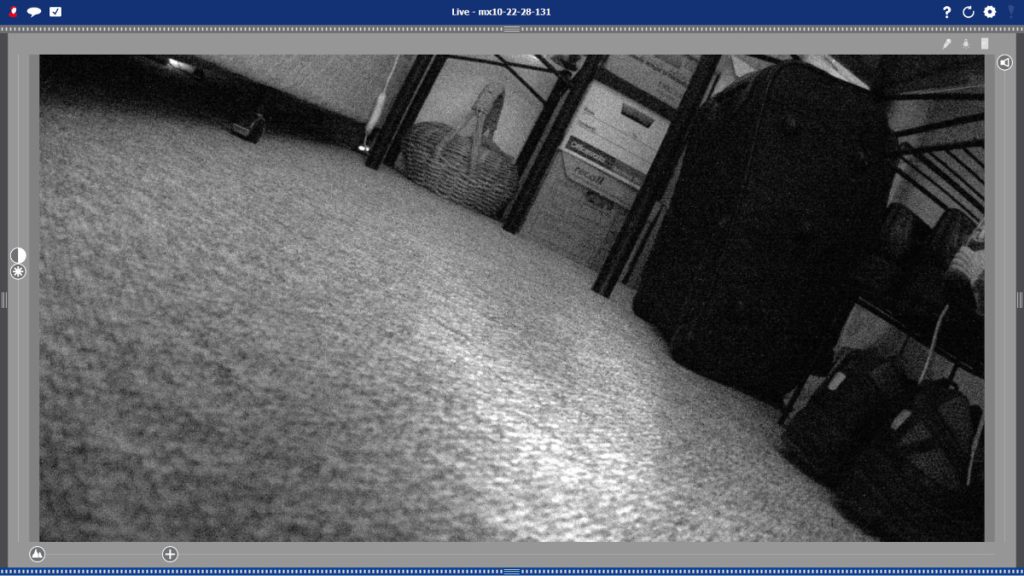
Setup once MxManagementCenter is loaded is very simple – as soon as you run the software the camera is found and displayed – it couldn’t be easier. This software is probably the key for me – the simplicity of driving the camera with all the controls you want – brightness and contrast slider on the left of the main screen, image quality and bit-rate control top right with one-click selection, zoom slider on the bottom (along with mouse wheel zoom and click and pull panning), volume control on the right – all there in the viewer with no need to minimise the image.
Usually I need to burrow into a browser interface to play with brightness and contrast and that means I tend to leave the settings as they are during live viewing when I ought to change them. MxManagementCenter is more highly evolved and keeps reminding you that the M16 is a system, not a camera. What does that mean? It means that from the viewer you can open a door, answer a phone call, turn on a light, check temperature, check recent alarm events, drive a hyperlink, as well as doing all the normal stuff – taking snap shots, tweaking resolution and recording.
In an era of me-too surveillance cameras there’s certainly more to the Mobotix M16 than meets the eye.
Further details about this MOBOTIX M16 here, MOBOTIX ONE is coming soon! see below. You can also read more SEN news here.
“In terms of camera performance, there’s a lot to like about the Mobotix M16 in this ultra-wide angle configuration.”




